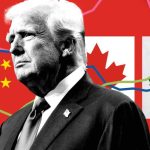President Joe Biden wants to remind you that your Super Bowl party was more expensive than it used to be. The reason, he claims, is corporate greed and “shrinkflation.” In a social media video before Sunday night’s game, he spoke of companies selling “smaller-than-usual products where the price stays the same.” He opposes this behavior and is “calling on the big consumer brands to put a stop to it.”
That’s quite an amazing move. There’s a straight line between shrinkflation, inflation, and the Biden administration’s own fiscal irresponsibility.
Shrinkflation is real. It happens when companies reduce the size or quantity of their products while maintaining the same sticker price, effectively raising the real price. In this case, Biden points the finger at the snack food and sports drink industries as two main culprits. Have you noticed that your Gatorade bottle has gotten a little smaller? Does your bag of chips seem to be filled more with air than ever? It’s probably not your imagination.
Still, Biden’s complaint would be funny if it wasn’t so sad. As Dominic Pino over at National Review explains, shrinkflation is legal if packaging accurately reflects the product’s content. Also, the Food and Drug Administration regulates packaging practices like “slack fill,” the main purpose of which is food preservation practices, not ensuring against smaller portions as Biden seems to claim. And yes, it’s true that some sellers have reduced the contents of their packages without changing prices, but this adjustment occurred back in 2022.
Why 2022? That’s the most important part.
The wave of shrinkflation came in response to the rise in inflation the country experienced starting in 2021. I am baffled that the president would make such a big deal out of it now. The administration has been trying to fool voters into conflating the fact that inflation has tempered with the idea that prices are basically back to normal. It’s not the case. While inflation has declined, the price of food is up by 20 percent on average since February 2021. Chicken and bread are up 25 percent, and rents are still mightily elevated.
These higher prices explain why voters continue to express plenty of frustration about the economy despite low unemployment, positive economic growth, and rising wages.
In the end, the president’s rant against companies is a weak attempt to distract us from the fact that his (and his predecessor’s) excessive spending policies during the pandemic caused the inflation. My former co-worker William Beach, who used to lead the Bureau of Labor Statistics, looks at the question in detail in a new Economic Policy Innovation Center brief titled “Is Inflation the Result of Excessive Deficit Spending?”
As Beach reminds us, total federal deficits from 2020 through 2023 amounted to $8.8 trillion. These are the largest peacetime deficits in U.S. history, both in nominal terms and as a percentage of gross domestic product (GDP), and they include a lot of spending passed by Biden after most of the pandemic crisis was averted and the economy was recovering.
This influx of deficit dollars led to a 25.4 percent increase in Americans’ bank assets between 2020 and 2021, translating into a significant rise in lending. Consumer loans increased by 19.2 percent, real estate loans by 12.1 percent, and total loans by 13.7 percent. This was the most substantial lending jump since the period leading up to the Great Recession. Additionally, a broad measure of the money supply grew by $5.4 trillion between March 2020 and April 2022—about a third of U.S. GDP at that time.
Beach rightfully notes that alternative explanations for inflation—such as supply chain disruptions, price gouging, and Modern Monetary Theory arguments tied to the wishful idea that government spending shouldn’t concern us—aren’t credible. The same goes for blaming shrinkflation on companies’ greed as opposed to a government that injected the economy with excessive purchasing power and brought about an inflation crisis, leaving all of us to find ways to adjust.
The best part of Beach’s report comes when he reminds us that while politicians are responsible for initiating the recent inflation, they also possess the means to stop it. Although prices might not revert to 2020 levels, Congress can enhance economic efficiency and productivity by reforming the tax code, rolling back regulations, and moving toward freer policies, potentially alleviating the family budget squeeze by raising incomes.
Congress could also finally get serious about cutting spending. That would do a lot to help the Federal Reserve tame inflation entirely. Blaming companies for inflationary price hikes is both wrong and cowardly.
COPYRIGHT 2024 CREATORS.COM.
The post Shrinkflation Is Real—and It’s Largely Biden’s Fault appeared first on Reason.com.






